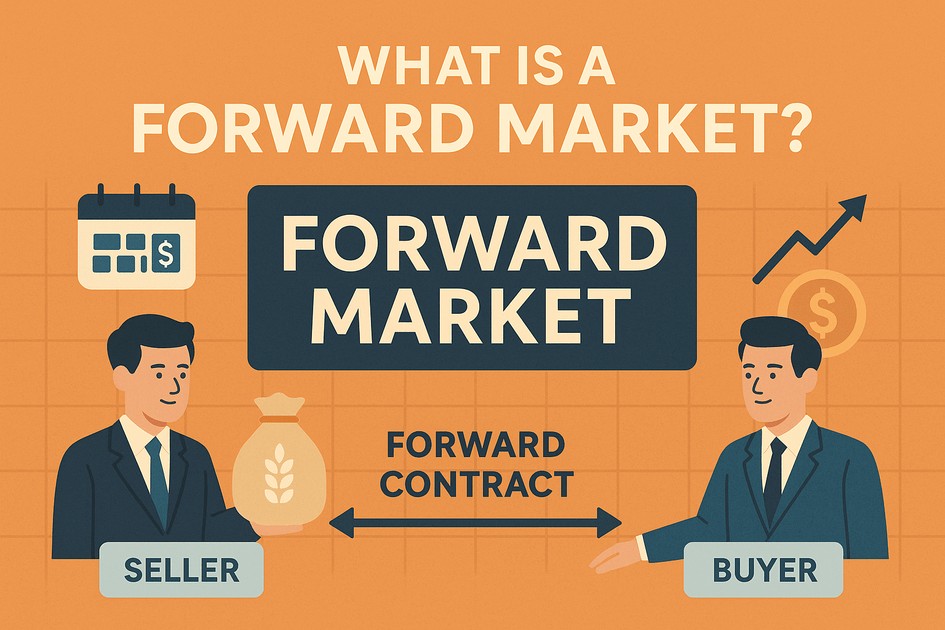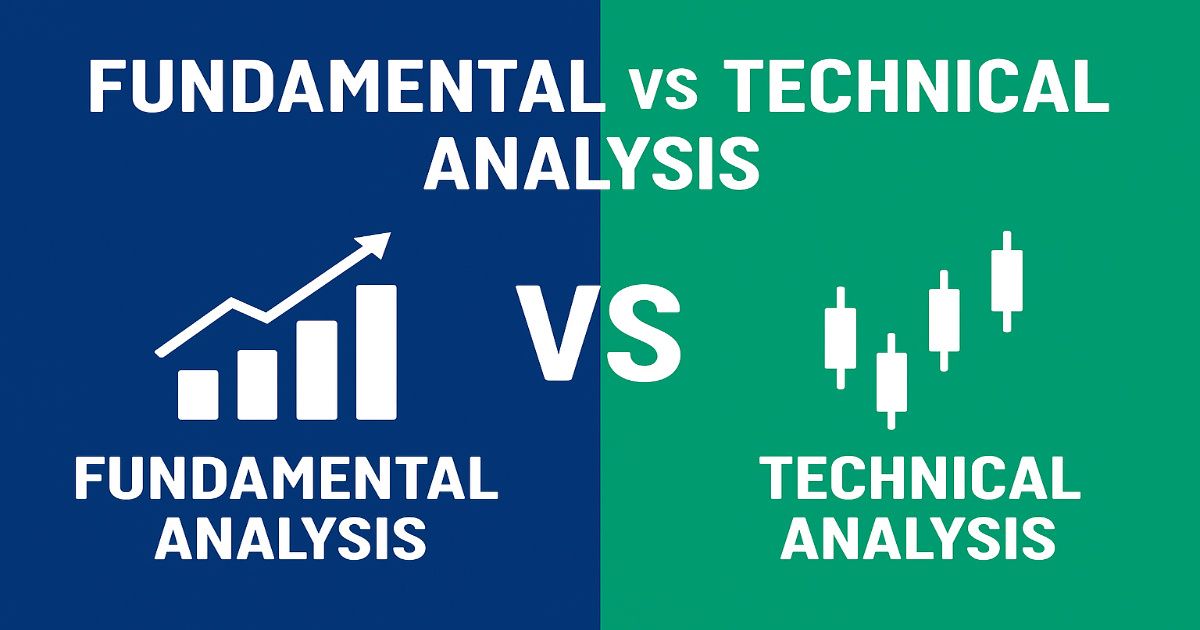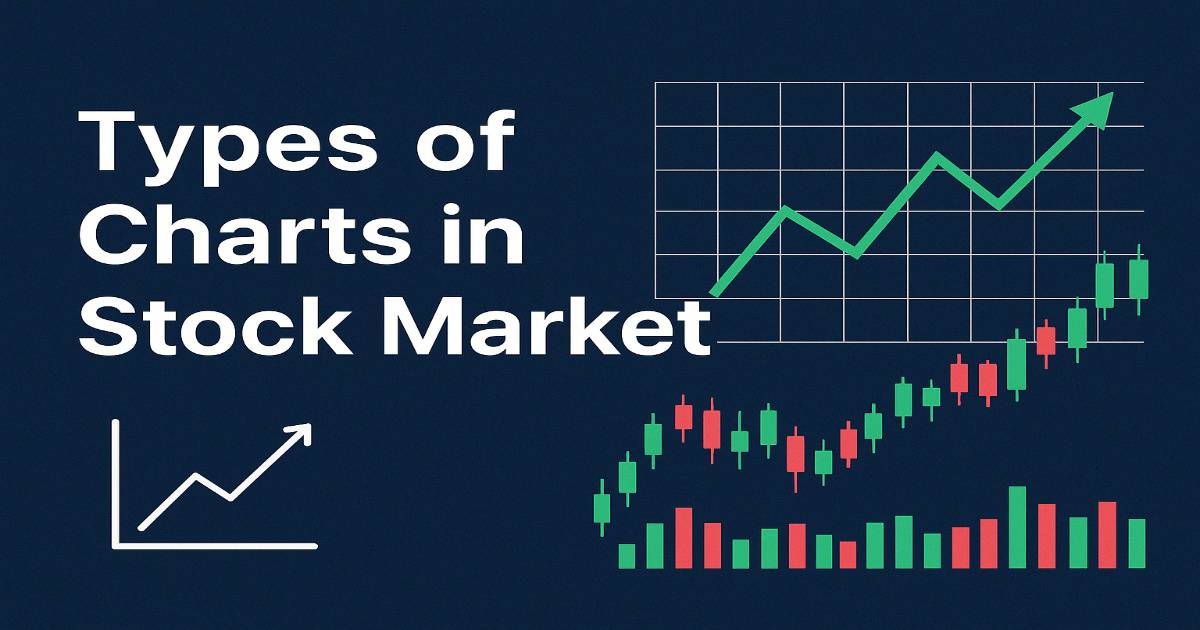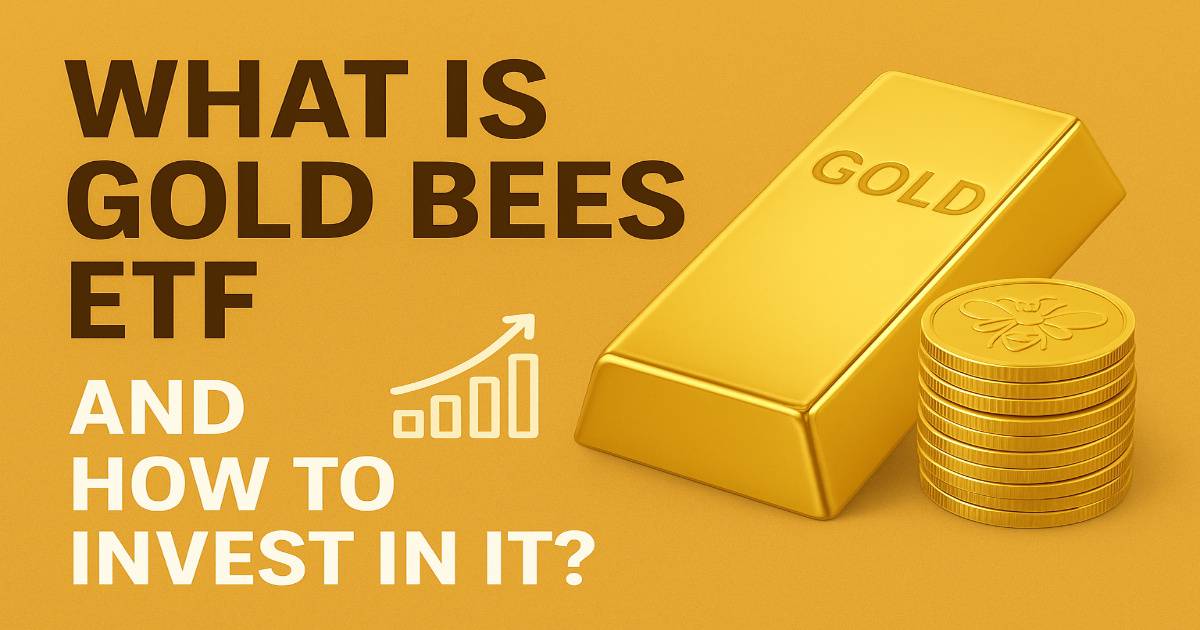When we think about the stock market or commodity market, most of us focus on the present — current prices, current trades, current gains or losses. But there’s another side to trading — the future. And that’s where the forward market comes into play.
In simple terms, the forward market is where you can lock in prices today for something you’ll buy or sell in the future. Whether you’re a farmer worried about future crop prices or an importer concerned about currency fluctuations, the forward market can be your safety net.
What Is a Forward Market?
A forward market is an over-the-counter (OTC) marketplace where participants agree to buy or sell an asset at a future date for a price that is agreed upon today.
Unlike the stock or commodity exchanges, forward contracts are customized — meaning the buyer and seller decide on their own terms: quantity, price, delivery date, etc.
These are not traded on a centralized exchange, and that’s one key difference from futures contracts.
How Does a Forward Contract Work?
A rice exporter in India is scheduled to deliver 10,000 kg of rice to a U.S. buyer in 3 months. The exporter is worried that the USD to INR exchange rate might drop, reducing profits.
So, the exporter enters into a forward contract with a bank to sell USD at ₹84 per dollar in 3 months. No matter what the actual exchange rate is in the future, he will get ₹84 for every dollar when the payment is received.
👉 Outcome: Risk is reduced, and income becomes predictable.
Who Uses the Forward Market?
Forward markets are especially useful for people and businesses who want to protect themselves against future price changes.
Common Participants:
- Investors & Traders (for speculation or arbitrage)
- Exporters and Importers (to hedge currency risk)
- Commodity Producers (farmers, miners, etc.)
- Oil & Energy Companies
- Banks & Financial Institutions
Types of Forward Contracts
Here are the main types of forward contracts based on the asset being traded:
| Type | Description |
|---|---|
| 1. Flexible Forward | In this type of forward contract, the parties have the flexibility to exchange the currency on or before the agreed maturity date. This allows greater convenience for businesses with uncertain payment timelines. |
| 2. Closed Outright Forward | In a closed outright forward, the exchange rate is fixed based on the prevailing spot rate plus a premium. The contract is settled only on the maturity date, with no room for early execution. |
| 3. Non-Deliverable Forward (NDF) | This is a cash-settled forward contract used for currencies that are not freely tradable. Instead of delivering the currency, the two parties settle the difference between the agreed forward rate and the spot rate in a major currency like USD. |
| 4. Long-Dated Forward | These are forward contracts with longer maturity periods (usually more than one year). They function similarly to standard forward contracts but are used for long-term hedging or speculation. |
What are Non-Deliverable Forwards?
Non-Deliverable Forwards (NDFs) are a type of forward contract used primarily in foreign exchange markets where one of the currencies involved is not freely tradable or is subject to capital controls (like the Indian Rupee, Chinese Yuan, etc.).
In an NDF, no physical delivery of the currency takes place. Instead, the contract is cash-settled in a freely convertible currency (usually USD), based on the difference between the agreed forward rate and the actual spot rate on the settlement date.
Forward Market vs Futures Market
| Point of Comparison | Forward Market | Futures Market |
|---|---|---|
| Trading Place | OTC (private) | Organized exchange |
| Customization | Fully customizable | Standardized contracts |
| Counterparty Risk | High | Low (cleared via exchange) |
| Liquidity | Low | High |
| Regulation | Unregulated | Regulated by authorities (like SEBI) |
| Margins Required | No | Yes, daily margin required |
Why Is the Forward Market Important?
- Hedging Price Risk
Businesses can lock in prices and avoid surprises due to market volatility. - Currency Protection
Companies involved in foreign trade can protect against exchange rate fluctuations. - Budgeting & Planning
Known prices allow better cost planning and cash flow forecasting. - Speculation & Arbitrage
Traders can earn profit by betting on future price movements or price differences.
Features of Forward Market
| Feature | Description |
|---|---|
| OTC Market | Trades happen directly between parties (not on an exchange). |
| Customizable Contracts | Terms like quantity, delivery date, and price can be tailored. |
| Settlement on Future Date | Delivery and payment are done on the agreed future date. |
| No Daily Margining | Unlike futures, no daily profit/loss adjustments. |
| Credit Risk | Counterparty default is a risk because there’s no clearing house. |
Benefits of the Forward Market
There are various advantages of using the forward market:
- In the forward market, parties enter and decide the quantity, time, and rate at the time of delivery according to their own needs, requirements, and specifications. It is extremely adaptable and practical for both parties.
- It is extremely beneficial to parties who have specific commodities that they will need to exchange in the future. The forward market provides a complete hedge and attempts to eliminate various risks so that parties can protect their commitments.
- The products in the forward market are usually traded over the counter. Rather than engaging in future contracts, the majority of institutional investors prefer to deal with them. Over-the-counter goods provide them the freedom to customize the duration, contract size, and approach to meet their specific needs.
- The parties can now match their exposure to the period in which they can enter the contract. They may adapt it to fit any party and change the time based on this.
Risks in Forward Markets
Despite the benefits, forward contracts come with risks:
Counterparty Risk
If one party defaults, the other party can face losses. Since these are not cleared by exchanges, there’s no guarantee of payment.
Lack of Liquidity
You may not easily find someone to take over your contract if you want to exit before maturity.
Market Risk
If the market moves against your position, you can incur a loss — especially if the contract is not used for hedging but for speculation.
Forward Market in India
In India, the forward market plays a vital role in foreign exchange hedging. Exporters and importers commonly use forward contracts with banks to manage currency exposure.
However, for commodities, futures contracts are more popular due to better regulation and liquidity. The Forward Markets Commission (FMC) used to regulate forwards and futures until it merged with SEBI in 2015.
Example:
A sugar mill in Maharashtra may enter a forward contract with a buyer in Dubai to sell 1,000 tons of sugar at a fixed price in 6 months, protecting both parties from price fluctuations.
How Are Forward Prices Calculated?
Forward prices are generally calculated using the following formula:
Forward Price = Spot Price × e^(r × t)
Where:
- Spot Price = Current market price
- r = Risk-free interest rate
- t = Time until delivery (in years)
- e = Exponential function (approx. 2.718)
👉 However, in real-world scenarios, adjustments are made for storage costs, dividends (in case of stocks), or interest differentials (in case of currencies).
Real-World Example – Currency Forward
Let’s say an Indian company expects to receive $1 million in 6 months from a U.S. client. The current exchange rate is ₹83/USD, but the company fears the rupee will strengthen to ₹80/USD, reducing the amount they receive in INR.
So, they enter into a forward contract with a bank to sell USD at ₹83.50 in 6 months. When the payment comes, even if the rate is ₹80, the company gets ₹83.50 — protecting their profits.
Key Takeaways
- A forward market is a place to trade agreements for future delivery at a fixed price.
- It helps in hedging, planning, and reducing uncertainty in volatile markets.
- Used widely in currencies, commodities, and interest rates.
- Unlike futures, it is private, customizable, and carries counterparty risk.
- It’s useful for businesses but risky for those speculating without proper understanding.
Conclusion
The forward market might not be as visible or glamorous as the stock market, but it’s an essential tool for managing financial risk in uncertain environments. Whether you’re exporting goods, investing in commodities, or trading currencies, understanding how forward contracts work can give you a strategic edge.
It’s a powerful example of how finance can help bring stability to an unpredictable world — by making the future a little more certain.
FAQs
Why are Non-Deliverable Forwards (NDFs) used instead of regular forward contracts?
NDFs are used when the local currency (like INR or CNY) is not freely convertible. They allow participants to hedge or speculate on currency movements without actual currency exchange, as only the difference in value is settled in a hard currency like USD.
What is the main difference between Flexible Forward and Closed Outright Forward?
A Flexible Forward allows the parties to settle the contract on or before the maturity date, offering flexibility. In contrast, a Closed Outright Forward must be settled only on the agreed maturity date with no early settlement option.
What exactly is a forward market?
A forward market is an over-the-counter market that determines the price of a financial instrument or asset for delivery in the future. Forward markets can be used to trade a variety of instruments, but the word is most commonly associated with the foreign exchange market.
What is the function of a forward?
These forward contracts are an agreement with a buyer and a seller to purchase or sell the underlying asset at a price they both agree on at a future date.







